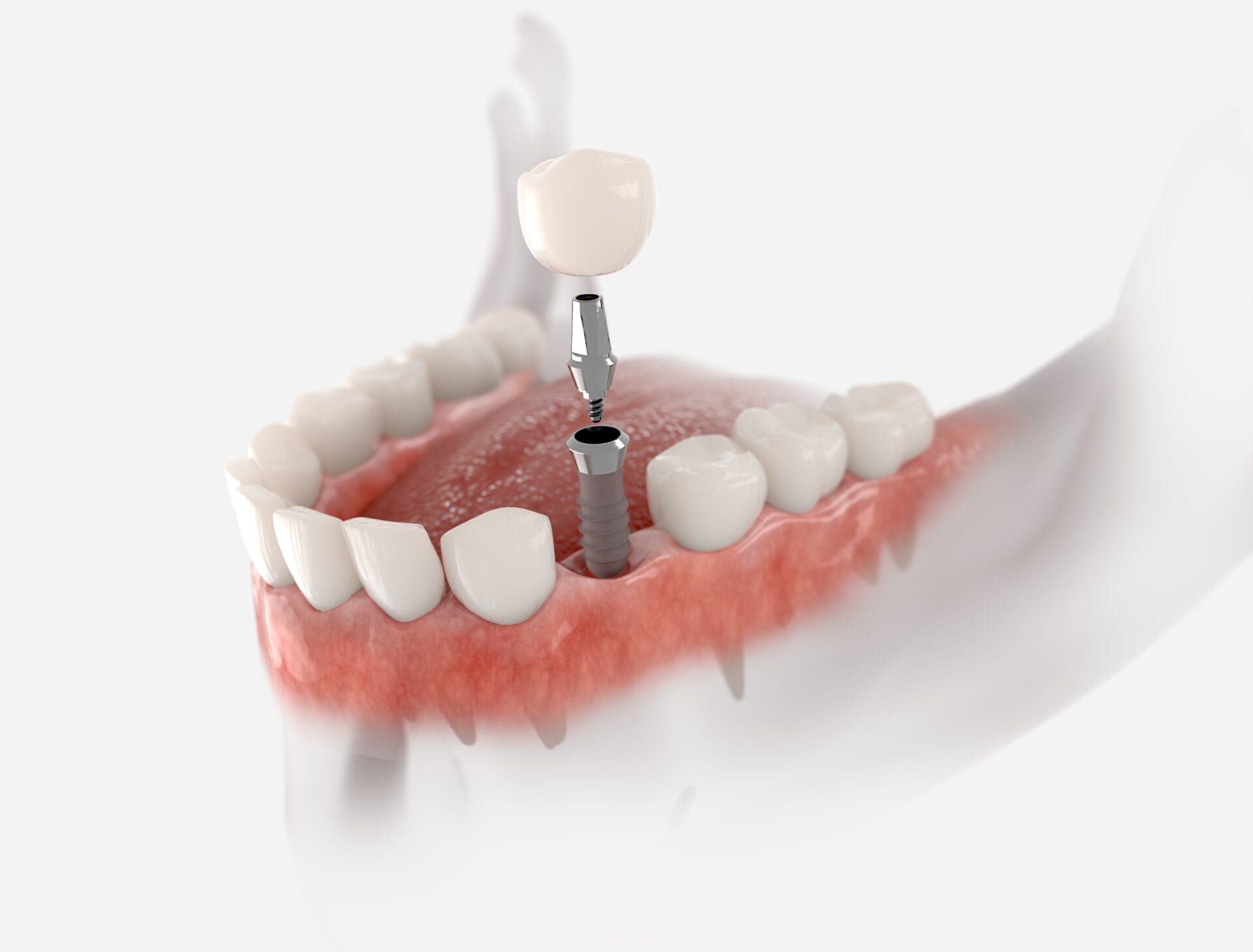Experience the current Technologies in Dental Implants Innovation
As the area of dental care proceeds to progress, the improvements in oral implant technology have been nothing short of impressive. From making use of advanced products that enhance durability to the application of electronic imaging for accurate positioning, these technologies are transforming the landscape of dental care. With minimally intrusive medical methods and the personalization capabilities of 3D printing, individuals currently have access to tailored solutions that were once unbelievable. In addition, the assimilation of modern technology is revolutionizing the functionality of dental implants, assuring improved end results and person fulfillment.
Advanced Materials for Improved Longevity
In the world of dental implants innovation, the combination of innovative products has considerably added to improving resilience and long life of these vital dental prosthetics. The use of materials such as titanium alloys, zirconia, and ceramic substances has transformed the area by providing boosted resistance, biocompatibility, and stamina to rust.
Titanium alloys are widely made use of in oral implants as a result of their extraordinary strength-to-weight ratio, rust resistance, and compatibility with the body. These alloys make sure the stability and long life of the dental implant by enduring the forces put in during chewing and speaking, providing a reliable service for patients looking for resilient tooth replacements.
Zirconia, a sort of ceramic product, has actually acquired popularity for its biocompatibility and natural tooth-like appearance. Its high stamina and resistance to wear make it an appropriate choice for oral crowns and bridges, improving the general aesthetic appeals and functionality of the implant.

Digital Imaging for Specific Positioning
The advancement of oral implants modern technology has actually further progressed with the integration of electronic imaging strategies, making sure precise positioning of these prosthetics for optimal practical and visual results. Digital imaging plays a critical duty in the planning and positioning of oral implants by giving comprehensive 3D pictures of the client's jawbone structure. This innovation permits dentists to assess bone thickness, locate important structures, and intend the specific position and angle for dental implant positioning with unparalleled accuracy.
By utilizing digital imaging, dental professionals can develop online medical guides that function as a roadmap during the dental implant positioning treatment. These overviews are personalized for each and every patient, thinking about their unique anatomy and the preferred result. This level of accuracy not only enhances the success rate of dental implant procedures but likewise reduces the risk of problems.
In addition, digital imaging makes it possible for dentists to imagine the last prosthetic remediation prior to the actual placement of implants, enabling thorough planning and making certain that the end result satisfies the individual's aesthetic expectations. In general, the assimilation of digital imaging technology has changed the field of dental implants, offering individuals a much more predictable, efficient, and patient-specific therapy technique.

Minimally Intrusive Surgical Strategies


Developments in surgical strategies have led to the growth of minimally intrusive strategies in the field of dental implantology. These strategies aim to reduce injury to the individual, reduce healing times, and boost general treatment outcomes. Minimally invasive procedures involve smaller sized incisions, specialized instruments, and progressed imaging innovations to precisely put dental implants with marginal interruption to bordering tissues.
One trick aspect of minimally intrusive techniques is the use of directed surgical treatment, where 3D imaging and computer-aided style software program are used to plan the implant positioning with great precision. This enables for an extra predictable outcome and can frequently eliminate the requirement for extensive flap surgery.
In addition, innovations in materials and dental implant layout have also added to the success of minimally intrusive methods. Implants with boosted surface area residential or commercial properties advertise quicker osseointegration, reducing the recovery time called for before the prosthetic repair can be positioned.
3D Printing for Personalized Solutions
Making use of 3D look at here printing modern technology in oral implantology enables the production of highly personalized options tailored to specific person demands and physiological variations. This advanced innovation makes it possible for oral experts to make and produce oral implants with outstanding accuracy and precision. By using digital imaging methods, such as cone beam of light computed tomography (CBCT), thorough 3D models of the patient's dental cavity can be produced to guide the dental implant planning process.
One of the key advantages of 3D printing in dental implantology is the ability to develop patient-specific implants that perfectly fit the special composition of each person. This personalized approach helps improve the general success and longevity of the dental implant by guaranteeing optimal fit and positioning. Additionally, 3D printing permits for the manufacturing of intricate geometries and complex frameworks that would be difficult or difficult to achieve using traditional production techniques.
Furthermore, 3D printing innovation enables dental experts to simplify the implantation procedure, decreasing surgery time and improving total client experience. With its ability to create customized solutions quickly and successfully, 3D printing is changing the field of oral implantology, offering people cutting-edge therapy choices and improved end results.
Integrated Innovation for Improved Functionality
Implementing innovative modern technology in oral implantology enhances performance and precision, elevating the requirement of treatment for patients undergoing implant treatments. Integrated Check Out Your URL innovation plays an essential function in enhancing the total success and sturdiness of dental implants. One essential improvement is the assimilation of digital scanning and imaging innovations, such as cone-beam calculated tomography (CBCT) and intraoral scanners. These devices permit detailed 3D imaging of the person's dental structures, helping with accurate treatment preparation and dental implant placement.
In addition, the assimilation of computer-aided style and computer-aided manufacturing (CAD/CAM) innovation allows the development of customized dental implant remediations with exceptional accuracy. CAD/CAM systems make use of electronic impressions to develop prosthetics that flawlessly fit the individual's one-of-a-kind makeup, ensuring optimum comfort and capability. Furthermore, making use of robotic-assisted surgical treatment in implant placement improves precision and decreases the threat of human error.
Verdict
Finally, the current developments in dental implants technology deal enhanced durability via sophisticated products, accurate placement with digital imaging, minimally invasive medical techniques, personalized options with 3D printing, and improved capability with incorporated modern technology - Dental implants Kent. These advancements in dental implants modern technology are transforming the field and providing individuals with more efficient and efficient therapy alternatives for restoring their smiles and oral health and wellness
The assimilation of modern technology is changing the performance of dental implants, assuring improved end results and person satisfaction.
The advancement of dental look at this now implants innovation has actually additionally progressed with the integration of digital imaging techniques, guaranteeing precise positioning of these prosthetics for optimum functional and visual results. Minimally invasive medical treatments entail smaller sized incisions, specialized instruments, and advanced imaging modern technologies to exactly position dental implants with minimal disruption to surrounding tissues.
Carrying out innovative innovation in dental implantology improves functionality and accuracy, elevating the criterion of treatment for clients going through dental implant procedures. Dental implants Kent. Integrated technology plays an important role in boosting the overall success and sturdiness of dental implants